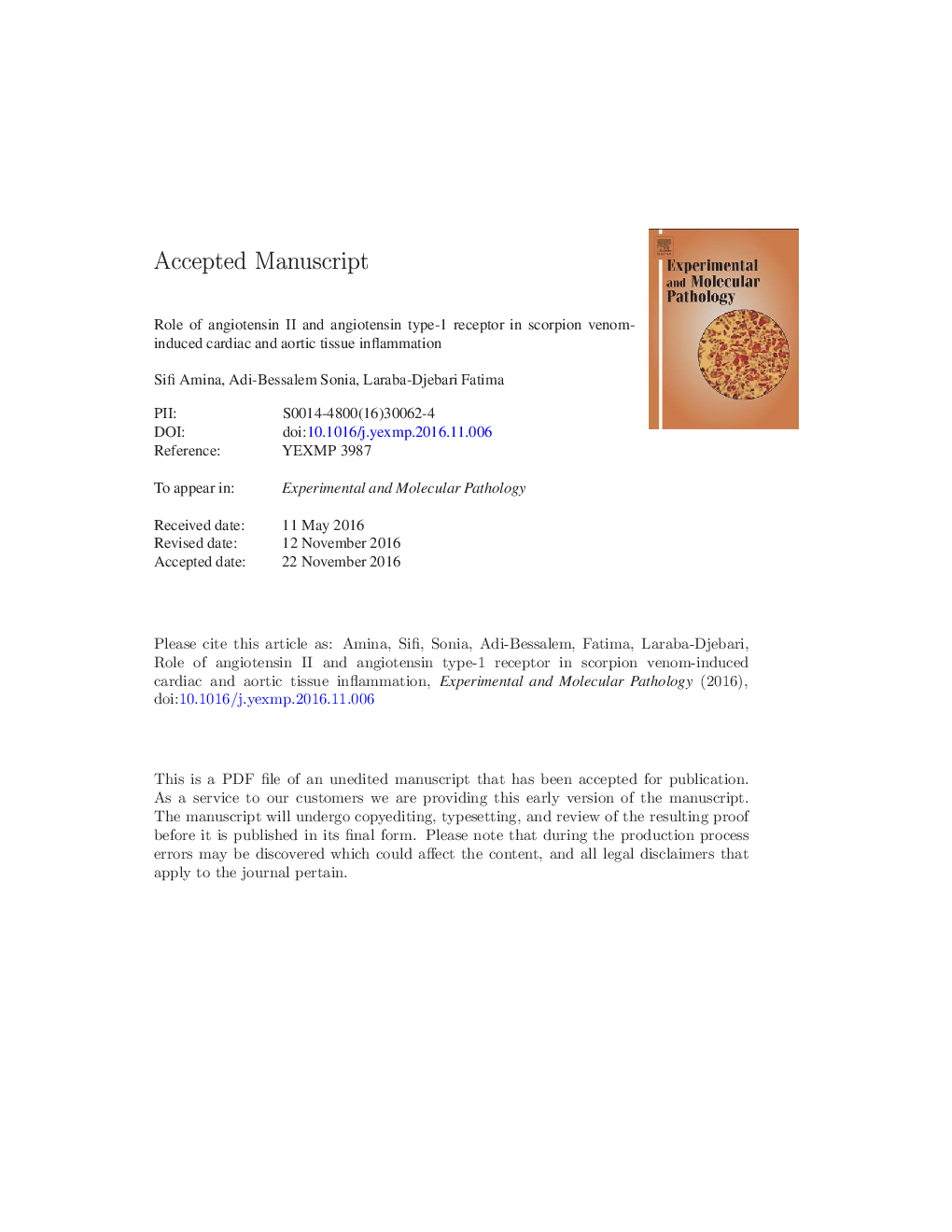| Article ID | Journal | Published Year | Pages | File Type |
|---|---|---|---|---|
| 5584402 | Experimental and Molecular Pathology | 2017 | 30 Pages |
Abstract
Scorpion stings are mainly associated with cardiovascular disturbances that may be the cause of death. In this study, the involvement of angiotensin II (Ang II) in cardiac and aortic inflammatory response was studied. Mice were injected with Androctonus australis hector (Aah) scorpion venom (0.5 mg/kg, subcutaneously), in the presence or absence of an angiotensin converting enzyme (ACE) inhibitor, captopril (15 mg/kg/day/1 day intraperitoneally) or an angiotensin type-1 receptor (AT1R) antagonist, valsartan (15 mg/kg/day/15 days, orally). In the envenomed group, results revealed severe tissue alterations with a concomitant increase of metabolic enzymes (CK and CK-MB) in sera. An important inflammatory cell (neutrophil and eosinophil) infiltration into the heart and aorta were observed, accompanied by imbalanced redox status (NO, MDA, catalase and GSH) and high cytokine levels (IL-6 and TNF-α) in sera with the expression of MMP-2 and MMP-9 metalloproteinases. However, the blockade of the actions of AngII by the ACE inhibitor or by the AT1R antagonist prevented cardiac and aortic tissue alterations, inflammatory cell infiltration, as well as the oxidative stress generation and cytokine and metalloproteinase expression. These results suggest the involvement of AngII, through its AT1R in the inflammation induced by Aah venom, in the heart and the aorta.
Keywords
EPO5,5'-dithiobis(2-nitrobenzoic acid)MDANMRICK-MBAAHPLA2AT1RIL-1βiNOSDTNBNF-kBECMACEGSHSDSMmpsIL-6MPOMAPKROSHydrogen peroxideangiotensin converting enzymephospholipase A2Angiotensin-converting-enzymeAngiotensin IIelectrocardiogramECGinterleukin 1-betainterleukin 6ELISAEnzyme-linked immunosorbent assaytumor necrosis factor- alphaAng IIscorpion venomsodium dodecyl sulfateCardiovascular systemTNF-αNuclear factor-kBlactate dehydrogenaseLDHExtracellular matrixmalondialdehydeMatrix metalloproteinasesnaval medical research institutemyeloperoxidaseNitric oxideH2O2Inflammatory responseCreatine kinasemitogen-activated protein kinasesGlutathioneReactive oxygen speciesAngiotensin type-1 receptor
Related Topics
Life Sciences
Biochemistry, Genetics and Molecular Biology
Clinical Biochemistry
Authors
Sifi Amina, Adi-Bessalem Sonia, Laraba-Djebari Fatima,
